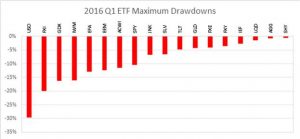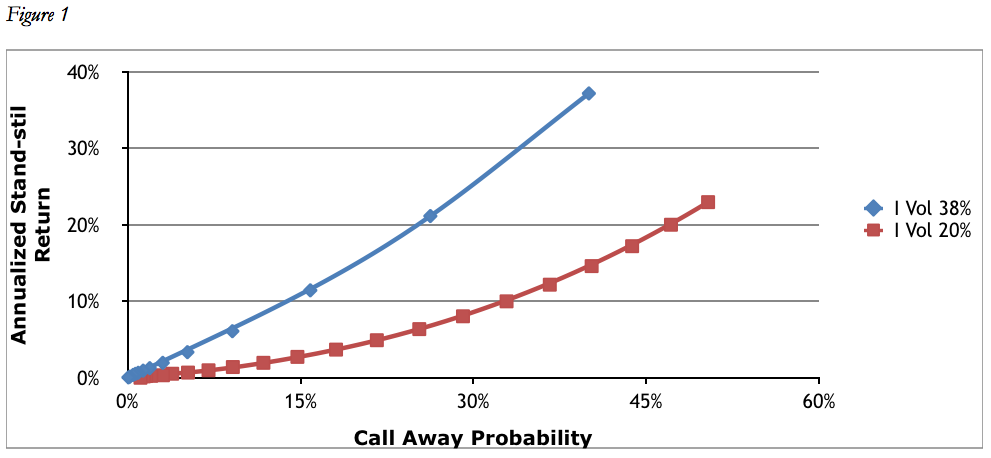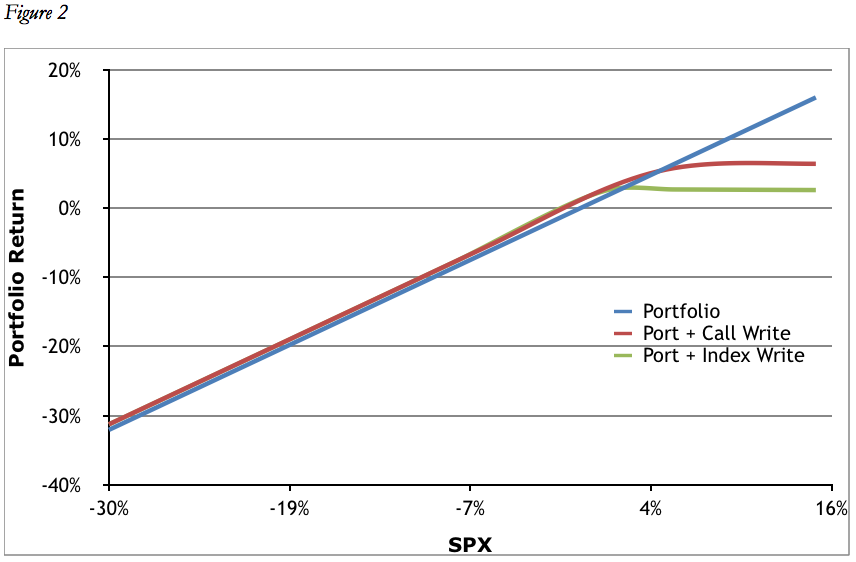In the wake of the 2016 presidential election, global financial markets have experienced surprising and outsized moves. U.S. equity markets and the U.S. dollar have soared (especially from the overnight low on the night of the election), international equities have largely been flat, emerging-market equities are down solidly, and global bonds had their worst month in over 25 years (since the inception of the Barclays Global Aggregate Total Return Index in 1990, which tracks global bond returns).
Global bonds peaked after the Brexit vote and have been trending downward since. The question now is whether bond prices will continue to fall or whether there will be some stabilization.
With regards to the economy, the rise in interest rates may be self-limiting. That is, the higher interest rates go, the more likely it is that those higher rates slow our highly-leveraged, debt-laden economy. A slower economy would then likely lead to lower interest rates. For example, we are already seeing mortgage applications decrease as mortgage rates move higher. This jibes with what Ben Bernanke said to a coterie of hedge fund managers at a private dinner shortly after his term at the Fed had ended, namely, that interest rates would not normalize in his lifetime.
Similarly, a stronger U.S. dollar would likely not be good for emerging-market economies and their equity markets, as we have already seen with the latter since the election (EEM, the iShares MSCI Emerging Markets ETF is down 6%). This is because many of those countries have borrowed in U.S. dollars and now the loans they have to repay are more onerous. We saw similar behavior of emerging-market stocks this past January and February after the Fed first raised rates in December 2015. Prolonged stress in emerging-market equities (e.g., China) would likely have a contagion effect to global equities in general.
Earnings for S&P 500 companies would also likely take a hit due to a stronger dollar as their overseas non-U.S.-dollar earnings are converted to U.S. dollars—not to mention the potential reduction in demand for goods and services that are now more expensive in overseas’ currencies. Falling earnings at significantly high valuations would likely lead to an increasingly worse risk-return proposition in equities, which could then lead to a flight to safety in bonds (particularly if any equity selloff is accompanied by talk of further quantitative easing).
On the political front, market participants’ reaction post-election was driven by the vision that fiscal stimulus in the form of infrastructure spending coupled with major tax cuts would unleash growth and inflation. While that may be the case, it’s far from certain that either will happen or come in at the magnitude that investors are currently expecting. Indeed, both Senate Majority Leader Mitch McConnell and House Speaker Paul Ryan came out recently as being somewhat cool to the idea of tax cuts if they are not revenue-neutral.
Congressional opposition to tax cuts is logical given the $21 trillion in federal government debt that must be serviced and with no end in sight to the deficit spending. If the bond market makes servicing and rolling over that government spending much costlier, either more debt will have to be taken on or spending on other discretionary items will have be cut (not always a popular activity for politicians, especially when Americans have become accustomed to $1 worth of government spending for 80 cents in taxes). If expectations are reduced for fiscal stimulus and/or tax cuts, interest rates might stabilize and possibly revert to lower levels.
While economic and political speculation is natural, what do the data tell us?
One set of indicators we track with respect to both the equity and bond markets is what we call the “smart-money indicators.” Every Friday the Commodity Futures Trading Commission issues its “Commitments of Traders” report, in which it summarizes the investment positions of three classes of traders in various financial instruments. These classes are the Commercials (big financial institutions or producers of commodities), the Speculators (hedge funds and similar investment firms), and the Non-Reportables (retail investors). Of these classes, the Commercials are thought of as the “Smart Money.”
With respect to the equity and bond markets, when the Smart Money is long the S&P 500 and retail investors are short, equities tend to do much better than average. When the Smart Money is short the 10-year U.S. bond while retail money is long, equities again tend to do better than average. The same is true when the Smart Money is short the 30-year U.S. bond while retail money is long. In the prior two cases, when the Smart Money is short bonds, it’s an implicit statement that they believe equities will outperform. Further, if the Smart Money has a longer position in the 10-year bond than in the 30-year bond, equities likewise tend to do better than average.
Prior to the election and throughout November and into December, all four of those conditions listed above were not in effect. That is, the Smart Money was largely out of equities across all four indicators. Historically, when the Smart Money is not long on any of those four indicators, equities have annualized a loss of 18.1%, while the 30-year bond has annualized a gain of 17.4%.
While the worst equity returns have tended to occur when all four of the smart money indicators are not long equities, the timing of the Smart Money is not always impeccable. Notably, the Smart Money was completely out of equities for several months prior to the final top of the dotcom bubble, during which time the NASDAQ doubled in price!
At present, one of the four smart-money indicators wants to be long equities, but only by a small margin and that could easily revert. Meanwhile the Smart Money is currently significantly long the 30-year bond, meaning that the big institutions were buying those bonds as retail investors and speculators were selling in the wake of the election results. Given that markets eventually tend to move in the direction of the Smart Money, we would expect some mean-reversion in interest rates.
One further data point in agreement with the smart-money indicators that suggests that equities might be extended (and hence due for a pullback that would likely support bond prices) is that retail investors poured $98 billion into ETF funds since the election, which is 1.5x more than they had invested in the entire prior year. These fund flows tend to be very contrarian in nature, with the largest flows coming near market tops and the largest outflows coming near market bottoms.
As with many things in life, longer-duration bonds present a tradeoff. Across a hundred years of market history, the longer-duration bond has been the best hedge to falling equity markets, even giving investors the potential to have positive returns when equity markets are deeply negative. On the other hand, periodically longer-duration bonds themselves undergo corrections, often when equity markets are ripping higher, which is not a pleasant experience. While the past is not necessarily prologue, investors have historically done much better in regards to long-horizon overall returns by having exposure to longer-duration bonds than they have with 10-year or even shorter-duration bonds. It’s for this reason that we incorporate long-duration bonds into our investment strategies.
Given that extreme market moves in either direction are not sustainable at their initial blistering rate, we would expect some back-and-forth market action in both equities and bonds over the next several weeks. During this time we should get a better idea of the trajectory of the economy, of expectations for S&P 500 earnings, of the likelihood that Trump’s policy agenda will come to fruition, and of the effect that a stronger dollar is having on emerging-market economies. This incoming information should help to clarify whether equities and bonds will continue along their current paths or whether substantial reversion is in order. The data suggest reversion is in order (i.e., lower equities, higher bonds), but only time will tell.
AUA Capital Management
AUA Capital Management is registered as an investment adviser with the SEC. The firm only conducts business in states where it is properly registered or is excluded from registration requirements. Registration is not an endorsement of the firm by securities regulators and does not mean the adviser has achieved a specific level of skill or ability.
All expressions of opinion reflect the judgment of the authors on the date of publication and may change in response to market conditions. You should consult with a professional advisor before implementing any strategies discussed. Content should not be viewed as an offer to buy or sell any of the securities mentioned or as personalized investment advice.
Different types of investments involve higher and lower levels of risk. There is no guarantee that a specific investment or strategy will be suitable or profitable for an investor’s portfolio. Asset allocation and diversification will not necessarily improve an investor’s returns and cannot eliminate the risk of investment losses.
Historical performance returns for investment indexes and/or categories, usually do not deduct transaction and/or custodial charges or an advisory fee, which would decrease historical performance results. There are no assurances that a portfolio will match or exceed any particular benchmark.

 AUA Capital Management is pleased to welcome Sean Corcoran as an Institutional Sales Associate. Sean has 10 years of experience in the financial services industry including institutional sales and consultant relationship management. Prior to joining AUA, he was a business development associate with SolomonEdwards. His other previous sales and consulting roles were with M.F. Irvine Companies LLC, North American Benefits Company and The Hartford Financial Services/PLANCO. Sean is a graduate of West Chester University.
AUA Capital Management is pleased to welcome Sean Corcoran as an Institutional Sales Associate. Sean has 10 years of experience in the financial services industry including institutional sales and consultant relationship management. Prior to joining AUA, he was a business development associate with SolomonEdwards. His other previous sales and consulting roles were with M.F. Irvine Companies LLC, North American Benefits Company and The Hartford Financial Services/PLANCO. Sean is a graduate of West Chester University.




 A Capital Management is pleased to welcome Michelle Malloy, Esquire as General Counsel and Director of Family Office Services in its West Conshohocken office. Michelle has 18 years’ experience working with and representing high net worth clients and entrepreneurs in all facets of their estate and business planning. Prior to joining AUA, Michelle was a Director in the Wilmington Family Office and a VP and Senior Fiduciary Advisor with the Wilmington Trust Company in Wilmington, Delaware. She has also worked in private practice in the Philadelphia area. She received her Juris Doctorate and Masters of Legal Letters (Taxation) from Villanova University School of Law, and is admitted to the Pennsylvania and New York bars and the United States Tax Court.
A Capital Management is pleased to welcome Michelle Malloy, Esquire as General Counsel and Director of Family Office Services in its West Conshohocken office. Michelle has 18 years’ experience working with and representing high net worth clients and entrepreneurs in all facets of their estate and business planning. Prior to joining AUA, Michelle was a Director in the Wilmington Family Office and a VP and Senior Fiduciary Advisor with the Wilmington Trust Company in Wilmington, Delaware. She has also worked in private practice in the Philadelphia area. She received her Juris Doctorate and Masters of Legal Letters (Taxation) from Villanova University School of Law, and is admitted to the Pennsylvania and New York bars and the United States Tax Court.



